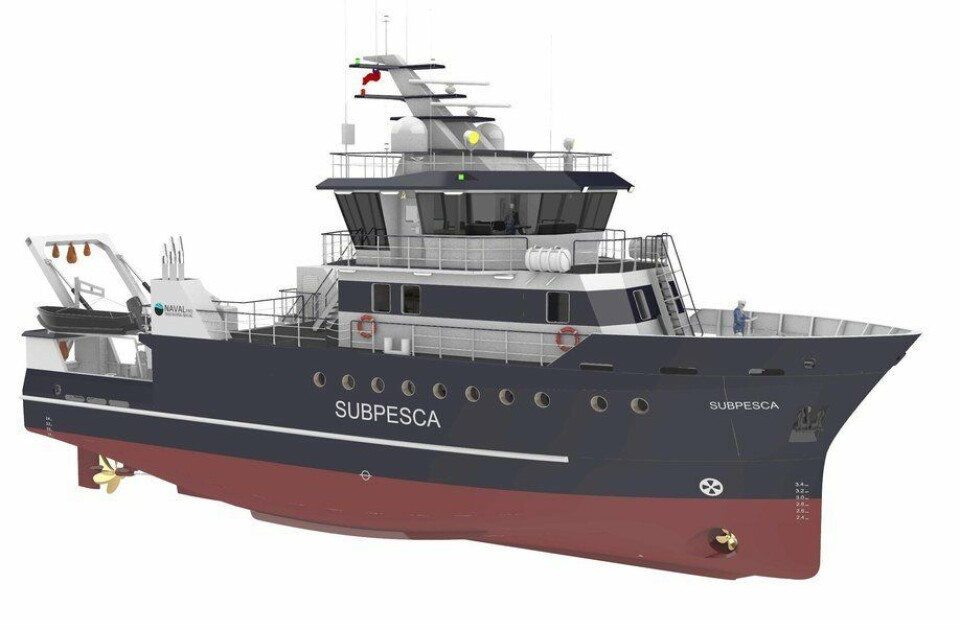
Authorities order ship to sound out salmon farm sites
Chile’s fisheries and aquaculture authority, Subpesca, has ordered a new-build vessel that will help determine how many fish can be grown at farm sites.
The 30.8 metre boat is being constructed at Chile’s Asenav shipyard will be used to carry out acoustic surveys, reconnaissance fishing and oceanographic sampling.
The ship will have the necessary equipment to obtain relevant information on oceanographic characteristics of the areas in which aquaculture activities such as salmon farming and mussel farming are carried out and will contribute significantly to the knowledge necessary to help establish carrying capacities for such activities, Asenav business development manager Germán Schacht told Fish Farming Expert’s Chilean sister site, Salmonexpert.cl.
Milestone
“We are very pleased to have signed this new construction contract as it represents an important milestone for the shipyard, such as the first construction of a Fisheries and Oceanographic Research vessel,” said Schact.
“This makes us the first Chilean shipyard to fully build a ship of this type, confirming the confidence of national institutions in the quality of construction and seriousness of our organisation.
“It is important to emphasise that very strict standards of noise and vibration levels of the ship must be met so that it does not contaminate the results of the acoustic measurements or affect the biomass of the sector which is being studied. Therefore, it is a great challenge for our shipyard, but we are sure that we will be able to fully complete this project, since we have a highly qualified and committed staff to carry out this task.”
Lower emissions
The vessel will have a beam of 9.00m, a draft of 2.95m, a deadweight of 65 tonnes, a speed of 10 knots and accommodation for 17 people.
It will have a diesel-electric propulsion system for better energy management and a lower environmental impact, thanks to lower CO2 emissions compared to conventional propulsion.
It will have three main generators of 376 kW each, two electric propulsion motors of 300 kW each and two 1700 mm diameter fixed pitch propellers.






















































